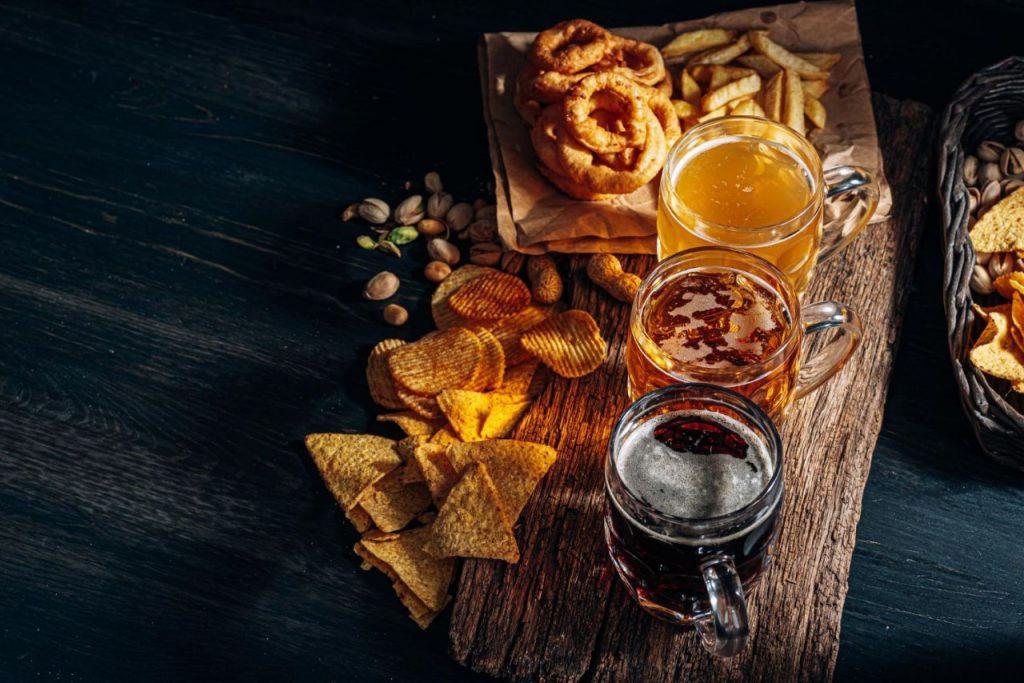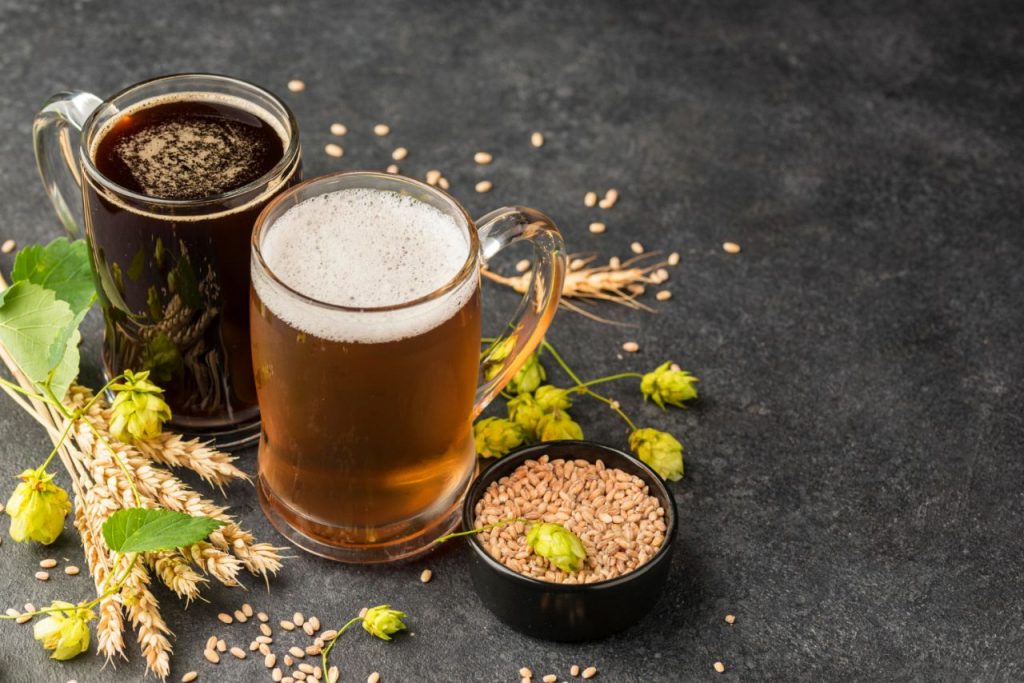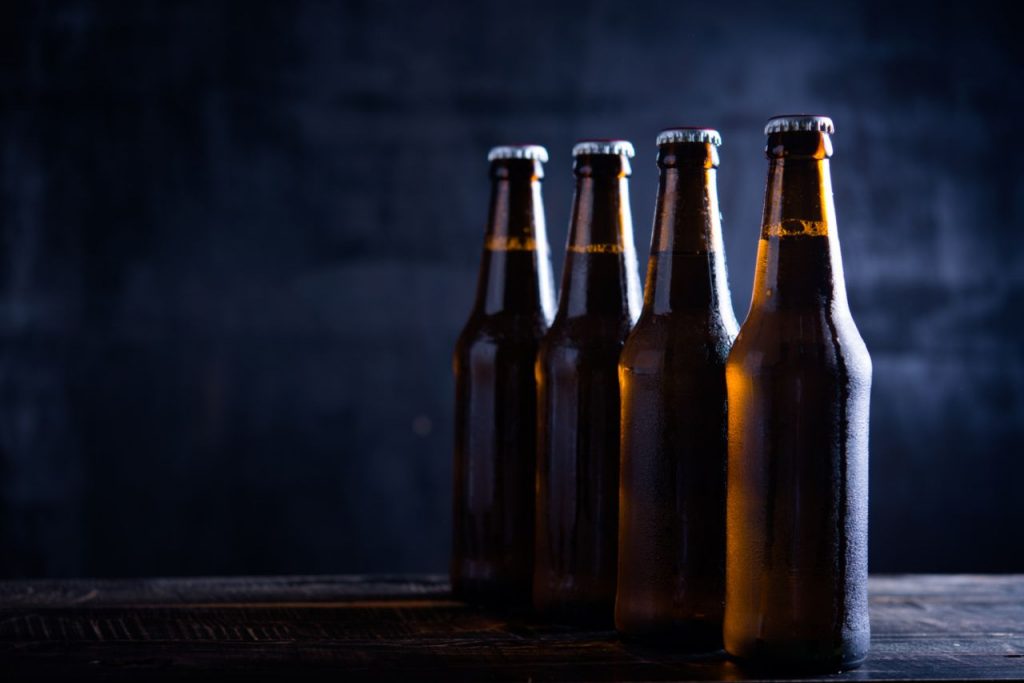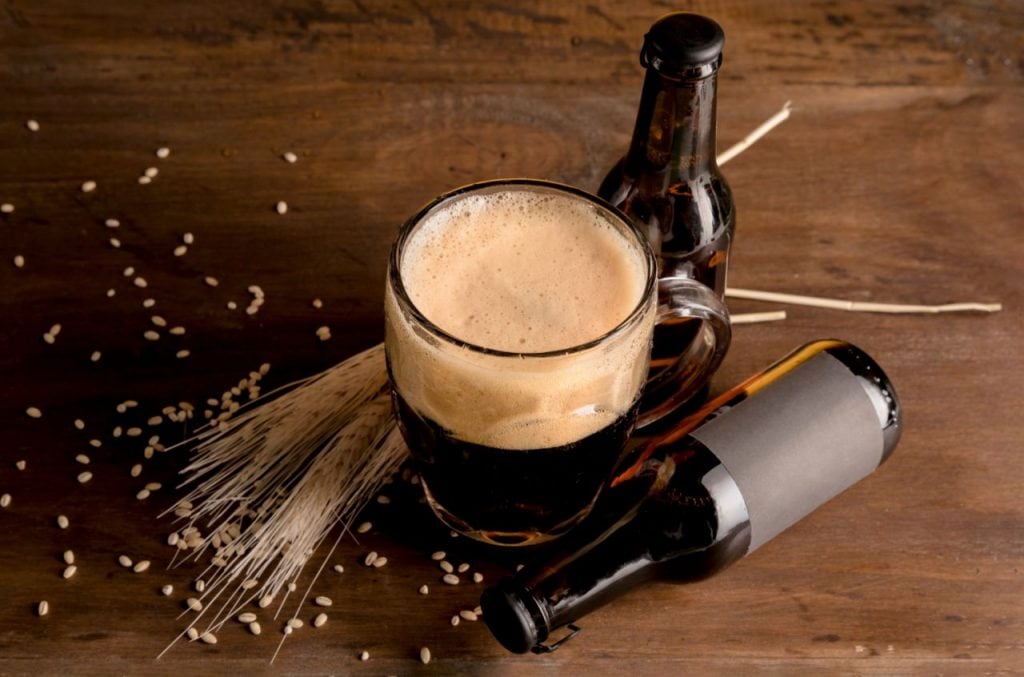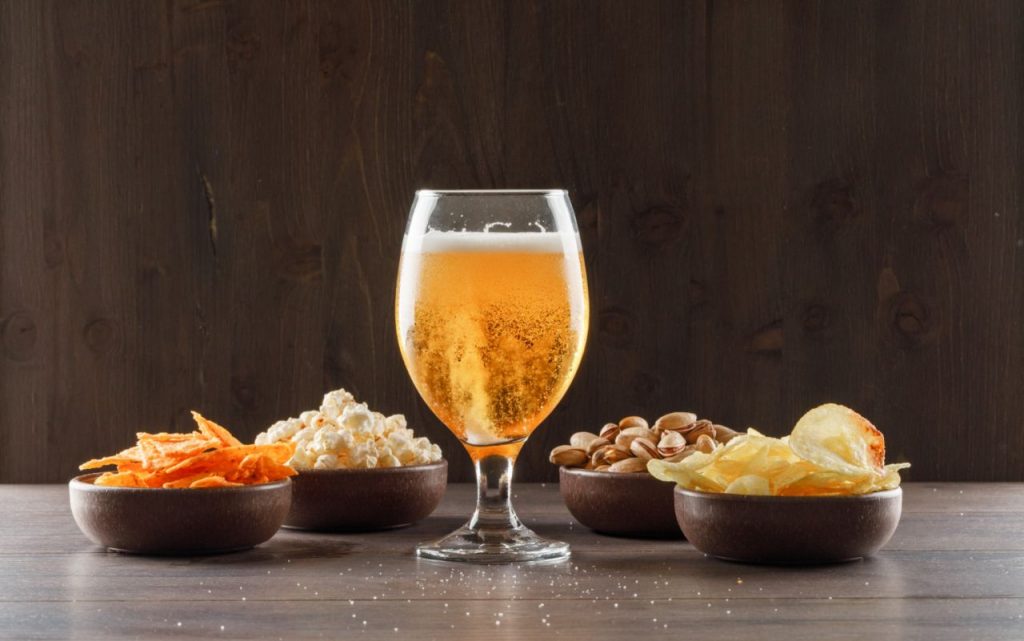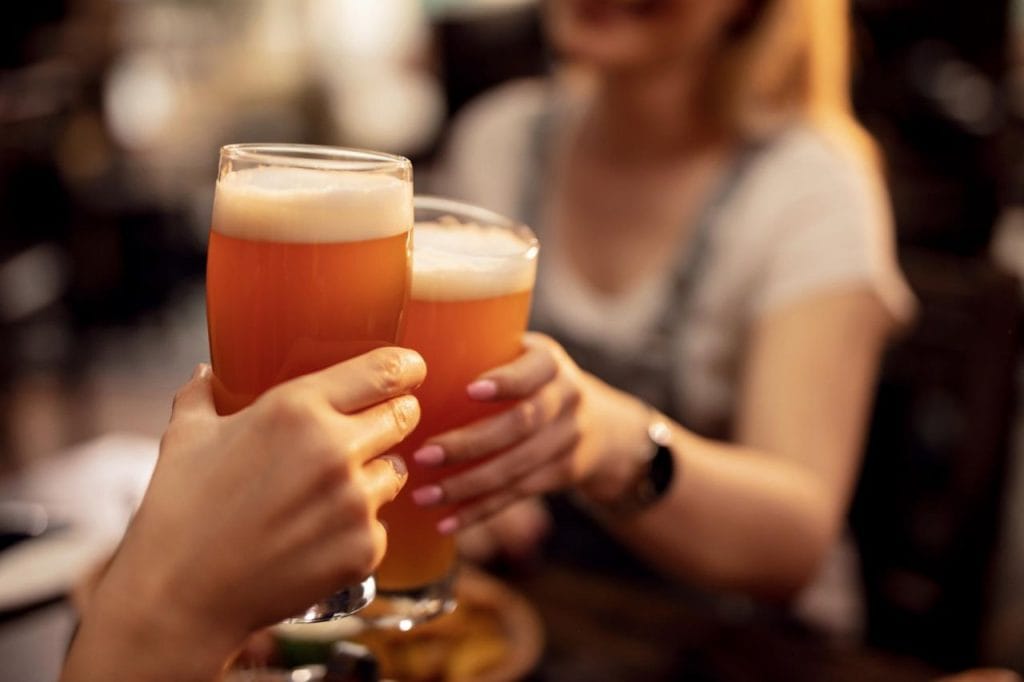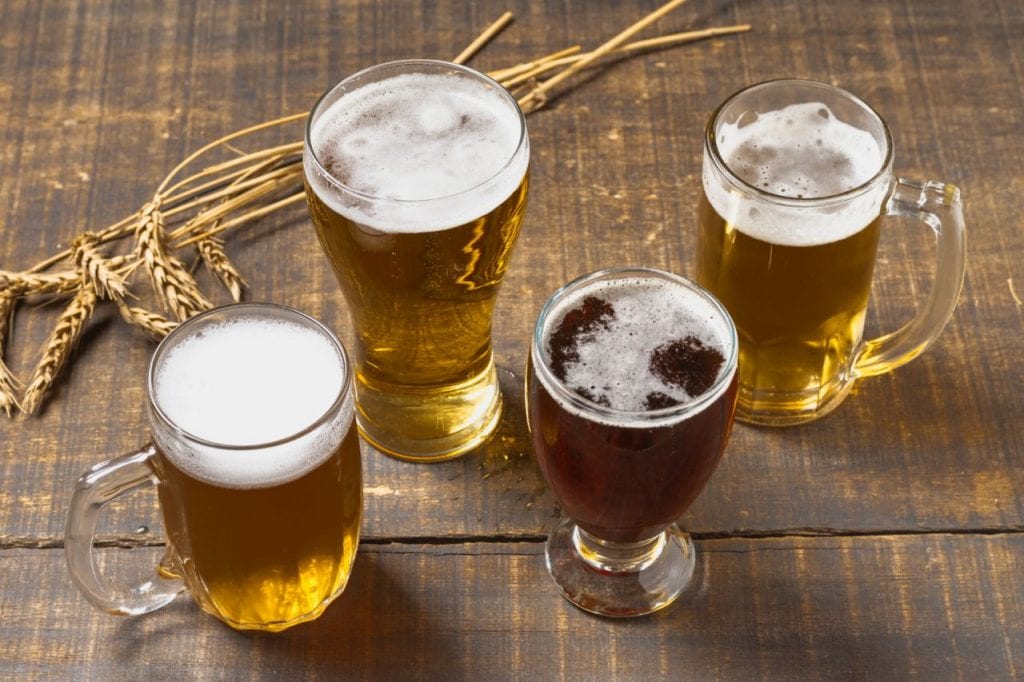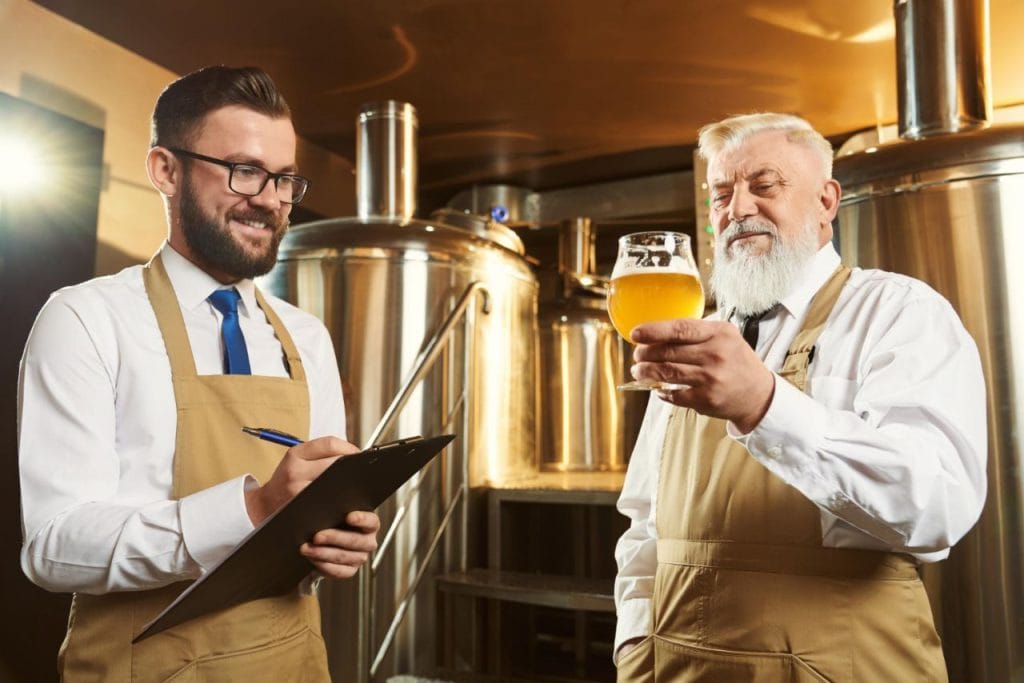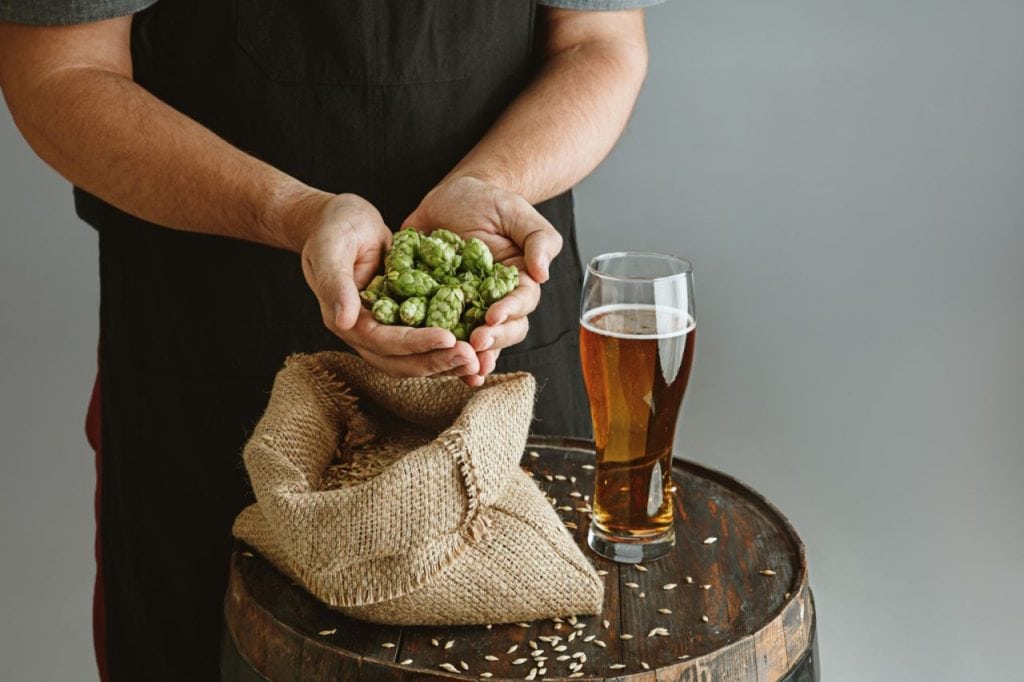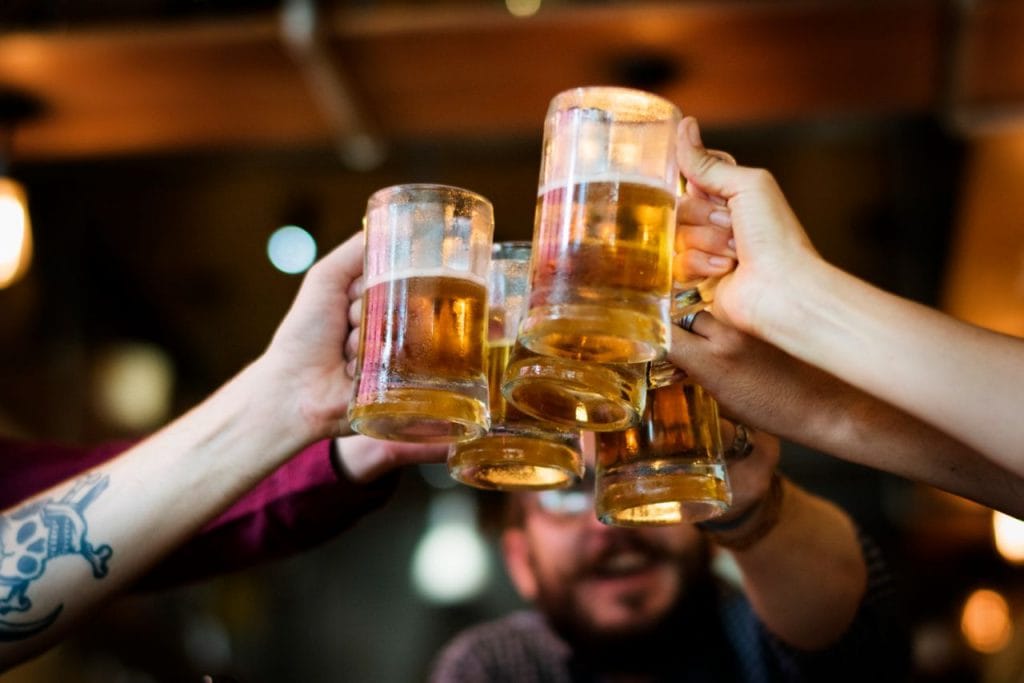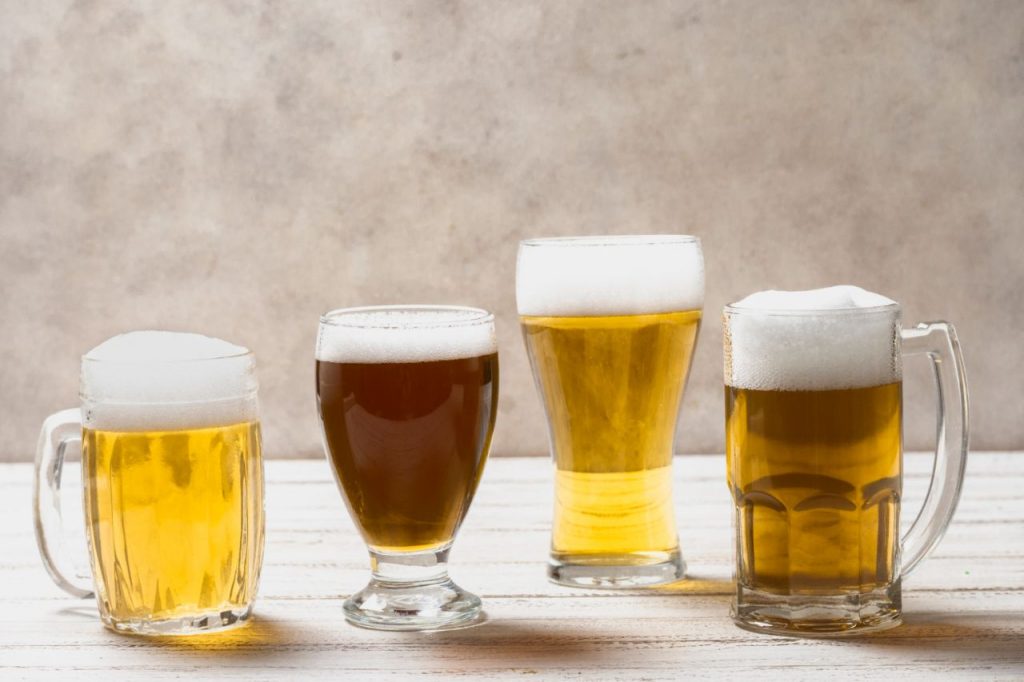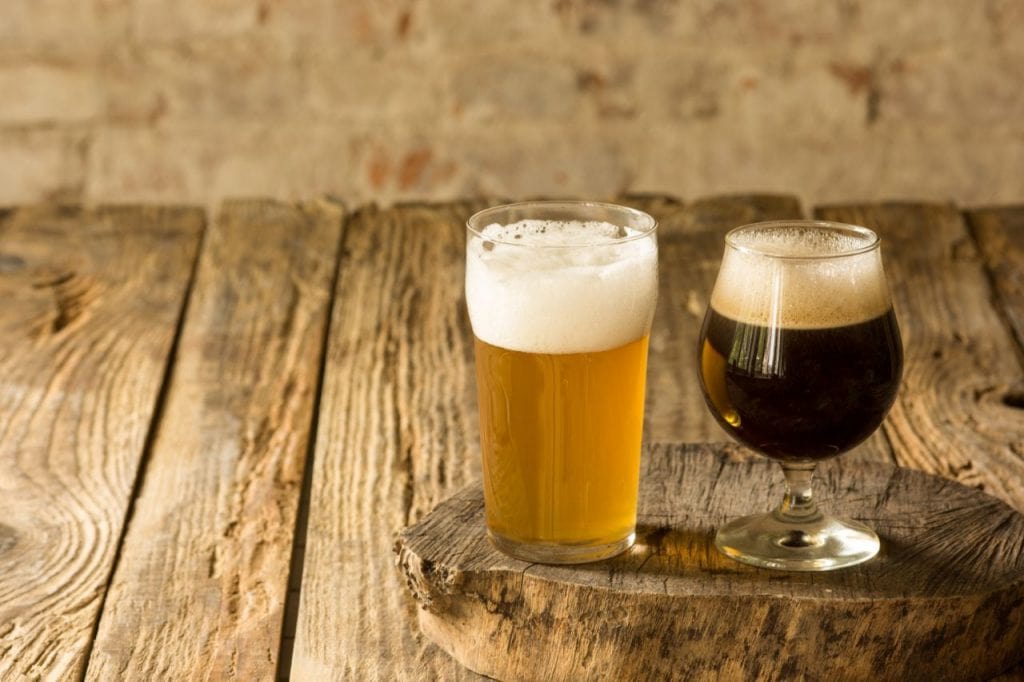Beer in a keg has a storage life of about 120 days, give or take. The keg's material would also influence the beer's longevity. Beer has a reputation for being able to last for a long time when stored in a keg, and only a few factors can shorten that period.
Beer from a keg can be served in numerous ways. Beer's shelf life might be affected by the method used to remove it from the keg.
Beer quality is a good indicator of how long it will stay in a keg. Beer held in a keg should be kept at a consistent temperature. The clock for the keg's expiration date starts ticking as soon as it's poured at the brewery.
What Is A Kegerator?
A kegerator, in its most basic definition, is a refrigerator specifically designed to keep beer at its optimal serving temperature until it is tapped and served. It's a compound of "keg" and "refrigerator," hence the name.
Simply put, a kegerator is a refrigerator big enough to hold a keg of beer or several. The beer can be accessed quickly and easily via a dispenser on top of the fridge.
After being illegal during Prohibition, home brewing gained popularity in the early 1980s, coinciding with the kegerator's rise. The idea for the device likely originated in the early 20th century.
Kegerators can be purchased in a wide variety of sizes to accommodate their purposes. A few are enormous and have enough room for numerous kegs in addition to some beer faucets. However, kegerators are typically small enough to fit behind a home bar, making them ideal for use in the comfort of one's home.
How Does It Work?
The kegerator relies on a basic mechanical design. A carbon dioxide (CO2) cylinder is used to supply the keg, keeping the pressure of the beer uniform across its whole surface. The CO2 cylinder is linked to a control valve.
The pressure exerted on the beer's surface can be controlled this way. A coupler, or beer tap valve, has two distinct tubes for inputting and dispensing beer. The regulator is connected to the coupler by one tube, and the coupler is connected to the faucet by another. Therefore, the regulator can adjust the amount of carbonation in the beer before it reaches the tap.
How Long Does Beer Last In A Kegerator
Most people who keep kegs in their homes do it with the help of kegerators, which are mini-refrigerators designed specifically for storing and serving draught beer. You can definitely down a few, but you aren't serving as many beers as a pub or restaurant would. How long does tapped beer typically last in a kegerator?
Beer styles and brewing dates make this a difficult question to answer. Nonetheless, once tapped, beer may often be stored in a kegerator for up to eight weeks before it begins to go bad.
Read on to find out how the keg's shelf life is affected by factors like how it was tapped and how long it was stored. If you'd like your beer keg to last longer, it's in your best interest to learn the proper way to store it and open the taps.
Tapped And Untapped
The simplest question to ask is if the bottle has been opened. As long as the keg is unopened and the beer is kept in the fridge, it will last for as long as you like.
Even after being tapped, the beer will keep for a long time, sometimes years. Beer style and system efficiency are also important considerations in this regard. Assuming the carbonation and temperature settings are optimised for the beer in question, the keg will remain fresh for far longer than it would take you to drink it all.
A temperature of 38 degrees Fahrenheit and a carbon dioxide pressure of 15-20 psi would be a decent ballpark approximation. However, it would be best if you are looking for details relevant to your prefered beer.
Proper Maintenance
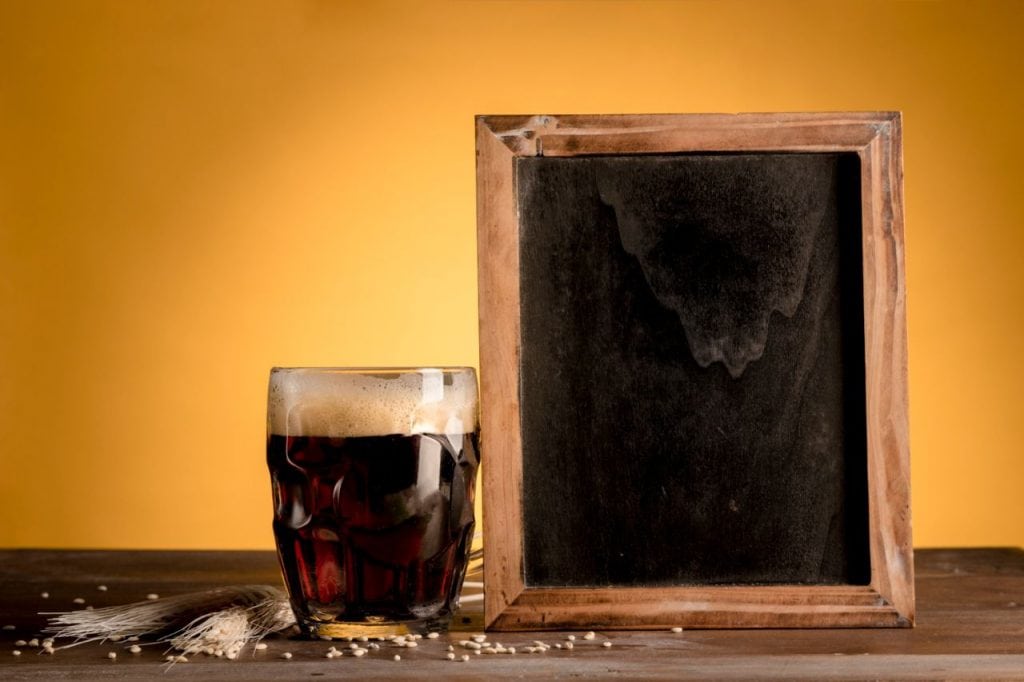
Ensure the kegerator is well-maintained and kept clean if you intend to store beer in it for an extended period. It will take much longer for the lines and taps to become dirty than for the beer to go bad.
The beer's flavour will suffer if the taps and lines aren't frequently cleaned and given some air. This prevents bacteria from coming into contact with the beer itself, another important consideration.
Changes In Flavour
There is no risk of spoilage if beer is stored in a kegerator for an extended period of time, although the flavour may evolve. The fermentation process in the beer is to blame for this. Especially hop-heavy beers will lose their scent after some time has passed.
Depending on the circumstances, IPAs and other similar beers can be stored for up to two months without changing the flavour. After three months, the taste will shift to be more malty and sugary.
In order to know what to expect from long-term cooling, you should first learn what happens to your particular beer kind over time.
Why Is Storage Temperature Important?
Beer kegs should be kept at a constant temperature of 38 degrees Fahrenheit. This prevents the beer from freezing and modifies its temperature and flavour.
Beer's flavour can suffer if it undergoes rapid or repeated temperature fluctuations. Because of this, storing and using beer at a temperature just below freezing is discouraged.
A lower temperature also mitigates the foaming of beer when driven with CO2. Beer served at a lower temperature has a more even carbonation and less foam because the gas is absorbed more readily.
If Your Beer Is Too Hot
Beer stored at temperatures above 50 degrees Fahrenheit might become stale more quickly due to oxidation, which causes subtle changes to the beer's chemical composition over time.
However, that isn't all. If you keep your keg in a damp, dark place, bacteria can grow inside, drastically altering the beer's flavour and quality.
If Your Beer Is Too Cold
We are now aware that it is very discouraging to keep beer in overly hot conditions. But what will happen if your beer is held for too long in temperatures below freezing? Kegs should be kept in a cool, dark environment, although temperatures of 28 degrees or lower could cause them to freeze.
Carbon growth on the inside can cause even frozen kegs to break open. According to research, keeping your keg at 38 degrees Fahrenheit (or 3,3°C) is optimal.
If you want your beer to remain fresh for months, it's important to store the keg at a temperature close to this ideal.
Three Useful Tips For Keeping Your Keg Fresh
We've reviewed some of these points before, but it's worth revisiting them. First, keep your keg in good condition to ensure a long shelf life for your beer.
Here are a few of the more efficient methods:
Buy It Fresh
Start with a brand new keg if you want it to last a long time. You won't get as much enjoyment out of a keg if you buy it close to its "sell-by" date. Keep in mind that if you store the beer properly, it may still be drinkable months after the sell-by date has passed.
Store It Correctly
To keep your keg in good condition for as long as possible, you need to consider how to keep it. Alcohol in a keg is best stored in a cold, dark place, as exposure to either heat or light can diminish its quality. This includes ensuring that your kegerator is at the correct pressure.
Beer that is too frothy and flat is the result of insufficient pressure, while beer that is poured too quickly from a keg at too high a pressure is wasted. Pressure settings for a kegerator should be adjusted accordingly for the beer being stored in it; however, for most typical ales and lagers, a range of 10-12 PSI is appropriate.
Use The Right Pump
It's important to use the proper pump in the end. To extend the life of your keg, as was previously said, carbon dioxide (CO2) pumps are the way to go.
How Long Does Beer Last In A Keg Untapped
Beer in a keg can be stored for an extended period of time without going stale if no air is introduced and the keg is maintained cool. Beer styles and brewing techniques play a role.
Pasteurisation also affects the beer's shelf life once it's been opened. Beer that has been pasteurised will keep for at least a few months and often for up to six months. Beer that hasn't been pasteurised won't last more than two months. Numerous beer lovers attest anecdotally that they have imbibed after six months, although this is not necessarily advised. Beer's flavour and freshness are preserved when stored at a cool temperature for as long as possible.
Another factor to consider is whether the keg needs to be carbonated before or after being stored. The shelf life of a keg that hasn't been forced carbonated before storage is significantly longer than that of a keg that has been carbonated.
How Long Does A Keg Last Unrefrigerated
The shelf life of a keg that has been properly sealed will not be significantly affected by storing it at room temperature. The ideal temperature range is between 44- and 55 degrees Fahrenheit, but any comfortable indoor temperature will serve. Keep away from extreme heat or cold when storing.
Your keg will last for months if kept at room temperature. If the keg's seal is still intact, some breweries even claim their beer will keep for an unlimited amount of time. In the end, a keg of beer can be kept at room temperature without refrigeration, but many experts recommend keeping the beer at a colder temperature.
Manual Pump vs. CO2 Pump

The length of time beer remains fresh in a keg depends in large part on how the keg is tapped. Generally speaking, there are two distinct keg pumps in existence. One is the manual pump, also known as a "party pump," which is the most common type. You may recognise these as the hand pumps used during frat parties. Two more strokes with the pressurised carbon dioxide (CO2) cylinder pump.
Because of the introduction of air (oxygen being the greatest offender), the beer's freshness will not be maintained as well if you use a hand pump to serve from a keg. There is a limited amount of time before oxidised beer loses its carbonation and flavour.
The CO2 pump serves as the "tap in a restaurant or bar." Most kegerators utilise this style of pump for beer dispensing. Only after being forced through the tap does the compressed CO2 canister allow any air to enter the beer. As a result, beer in a keg that has been tapped with a carbon dioxide pump stays fresh for weeks because it is not exposed to oxygen.
Conclusion
Kegerators are large refrigerators to store a keg of beer or perhaps multiple kegs. A combination of "keg" and "refrigerator," hence the name. Kegerators are available for purchase in a wide range of sizes to satisfy the various needs of their customers. Most residential keg storage is done with a mini-refrigerator built for storing and dispensing draught beer. A kegerator can keep beer fresh for up to eight weeks after taping.
When beer is exposed to rapid or repeated temperature changes, its flavour can deteriorate. Studies show that a constant temperature of 38 degrees Fahrenheit (3,3 degrees Celsius) is ideal for a keg. Keep kegs out of direct sunlight and temps below 28 degrees since freezing may occur. Because heat and light can degrade the quality of alcohol in a keg, it's ideal for keeping kegs in a cool, dark spot. When properly pasteurised, beer can be stored at room temperature for at least a few months and typically up to six months.
A properly tapped keg will keep beer fresh for a long period. Although a keg won't spoil if left at room temperature, experts advise storing it in a cooler environment for optimal flavour. Certain breweries boast that their beer can be stored indefinitely in the fridge.
Content Summary
- Beer in a keg has a storage life of about 120 days, give or take.
- The keg's material would also influence the beer's longevity.
- Beer quality is a good indicator of how long it will stay in a keg.
- Beer held in a keg should be kept at a consistent temperature.
- Simply put, a kegerator is a refrigerator big enough to hold a keg of beer or several.
- The kegerator relies on a basic mechanical design.
- How long does tapped beer typically last in a kegerator? Beer styles and brewing dates make this a difficult question to answer.
- Nonetheless, once tapped, beer may often be stored in a kegerator for up to eight weeks before it begins to go bad.
- Read on to find out how the keg's shelf life is affected by factors like how it was tapped and how long it was stored.
- If you'd like your beer keg to last longer, it's in your best interest to learn the proper way to store it and open the taps.
- Tapped And UntappedThe simplest question is if the bottle has been opened.
- As long as the keg is unopened and the beer is kept in the fridge, it will last for as long as you like.
- Even after being tapped, the beer will keep for a long time, sometimes years.
- Proper maintenance ensures the kegerator is well-maintained and kept clean if you intend to store beer in it for an extended period.
- It will take much longer for the lines and taps to become dirty than for the beer to go bad.
- Changes In FlavourThere is no risk of spoilage if beer is stored in a kegerator for an extended period of time, although the flavour may evolve.
- Depending on the circumstances, IPAs and other similar beers can be stored for up to two months without changing the flavour.
- In order to know what to expect from long-term cooling, you should first learn what happens to your particular beer kind over time.
- Why Is Storage Temperature Important? Beer kegs should be kept at a constant temperature of 38 degrees Fahrenheit.
- This prevents the beer from freezing and modifies its temperature and flavour.
- Because of this, storing and using beer at a temperature just below freezing is discouraged.
- If Your Beer Is Too ColdWe are now aware that keeping beer in overly hot conditions is very discouraging.
- But what will happen if your beer is held for too long in temperatures below freezing?
- Kegs should be kept in a cool, dark environment, although temperatures of 28 degrees or lower could cause them to freeze.
- According to research, keeping your keg at 38 degrees Fahrenheit (or 3,3°C) is optimal.
- If you want your beer to remain fresh for months, it's important to store the keg at a temperature close to this ideal.
- First, keep your keg in good condition to ensure a long shelf life for your beer.
- To keep your keg in good condition for as long as possible, you need to consider how to keep it.
- Alcohol in a keg is best stored in a cold, dark place, as exposure to either heat or light can diminish its quality.
- This includes ensuring that your kegerator is at the correct pressure.
- To extend the life of your keg, as was previously said, carbon dioxide (CO2) pumps are the way to go.
- Pasteurisation also affects the beer's shelf life once it's been opened.
- Beer's flavour and freshness are preserved when stored at a cool temperature for as long as possible.
- Another factor to consider is whether the keg needs to be carbonated before or after being stored.
- The shelf life of a keg that hasn't been forced carbonated before storage is significantly longer than that of a keg that has been carbonated.
- The shelf life of a keg that has been properly sealed will not be significantly affected by storing it at room temperature.
- Keep away from extreme heat or cold when storing.
- Your keg will last for months if kept at room temperature.
- In the end, a keg of beer can be kept at room temperature without refrigeration, but many experts recommend keeping the beer at a colder temperature.
- The length of time beer remains fresh in a keg depends in large part on how the keg is tapped.
- Two more strokes with the pressurised carbon dioxide (CO2) cylinder pump.
- Because of the introduction of air (oxygen being the greatest offender), the beer's freshness will not be maintained as well if you use a hand pump to serve from a keg.
- The CO2 pump serves as the "tap in a restaurant or bar."
- Most kegerators utilise this style of pump for beer dispensing.
- As a result, beer in a keg that has been tapped with a carbon dioxide pump stays fresh for weeks because it is not exposed to oxygen.
FAQs About Beer Kegerator
Does Beer Go Bad In A Keg?
Keg beer will remain fresh if dispensed with CO2 while maintaining the proper temperature and pressure: For non-pasteurized draft beer, about 45-60 days. For pasteurised draft beer, it takes about 90-120 days. So, for example, Non-pasteurized beer has a shelf life of 45-60 days.
Can Old Keg Beer Make You Sick?
There are good bacteria, ones that won’t make you sick, and there are bad bacteria that will make you sick. This is because it provides fuel for more bacteria and oxidises the beer, changing the flavour. Once oxygen (air) is introduced into the keg, it has only days before the flavour has changed substantially.
Do Untapped Kegs Need To Be Refrigerated?
Yes. Beverages brewed today require refrigeration to preserve their quality. Most beer is not pasteurised, which means it will spoil if stored in a keg at ambient temperature. Few breweries even bother with pasteurisation now because it's not necessary.
How Many Cans Of Beer Are In A Keg?
There are 165 12oz bottles of beer in one keg. A keg is equivalent to half a barrel, containing 15.5 gallons, 58.7 litres, or 165 pieces of 12 oz beer bottles.
Can An Untapped Keg Go Bad?
When you have an extra keg of beer left over from a party, it can seem attractive to keep it around for the next one. However, even untapped, the beer in your keg can still go bad. Therefore, your beer keg should have a stamp signifying the expiration date.
Keg beer will remain fresh if dispensed with CO2 while maintaining the proper temperature and pressure: For non-pasteurized draft beer, about 45-60 days. For pasteurised draft beer, it takes about 90-120 days. So, for example, Non-pasteurized beer has a shelf life of 45-60 days.
There are good bacteria, ones that won’t make you sick, and there are bad bacteria that will make you sick. This is because it provides fuel for more bacteria and oxidises the beer, changing the flavour. Once oxygen (air) is introduced into the keg, it has only days before the flavour has changed substantially.
Yes. Beverages brewed today require refrigeration to preserve their quality. Most beer is not pasteurised, which means it will spoil if stored in a keg at ambient temperature. Few breweries even bother with pasteurisation now because it's not necessary.

